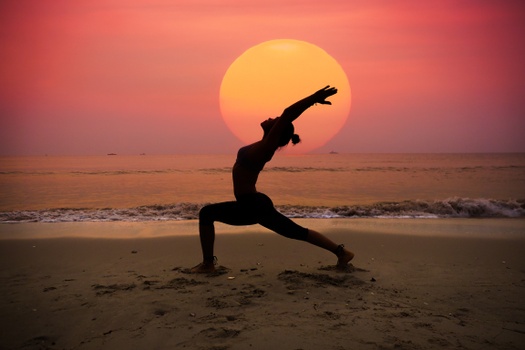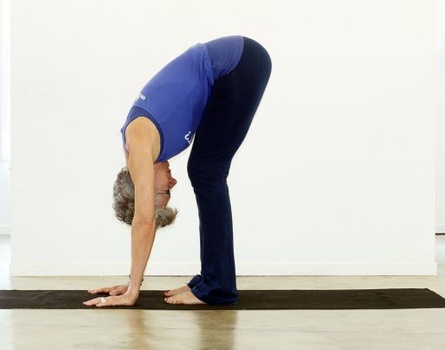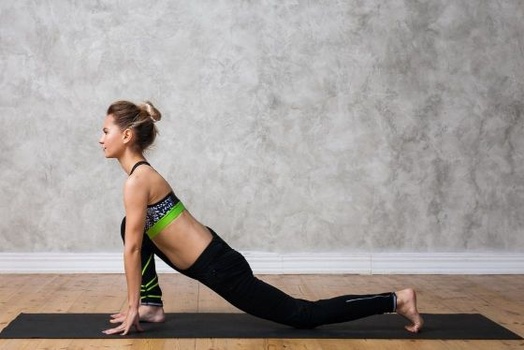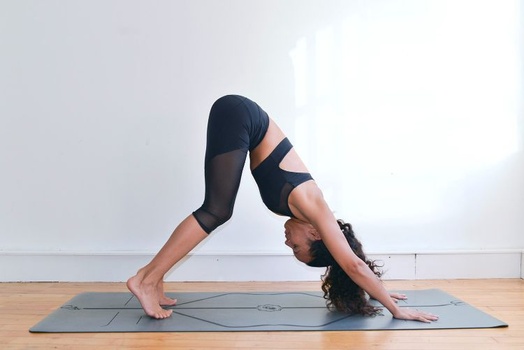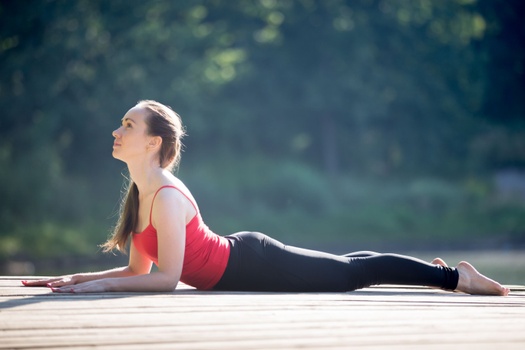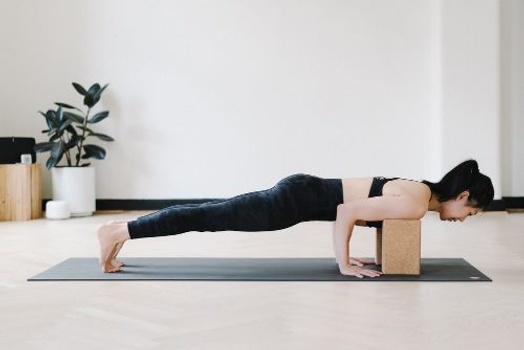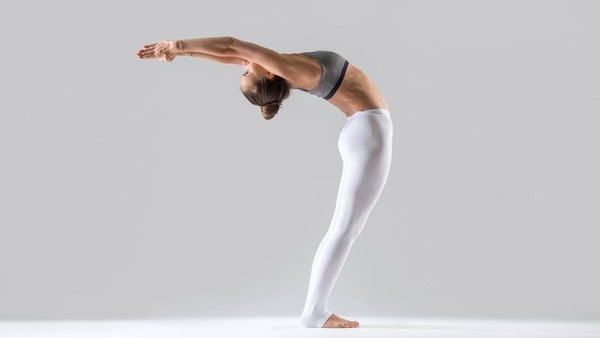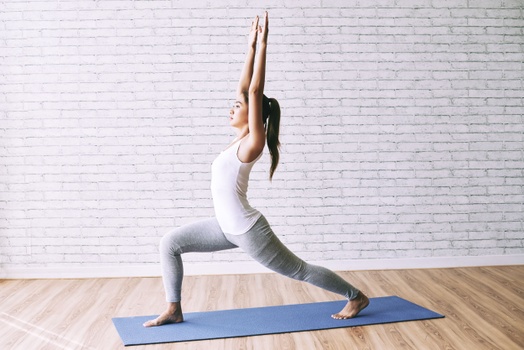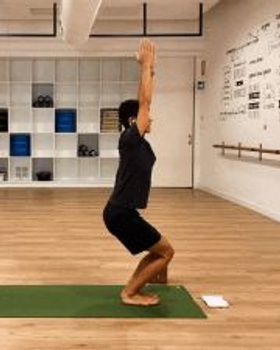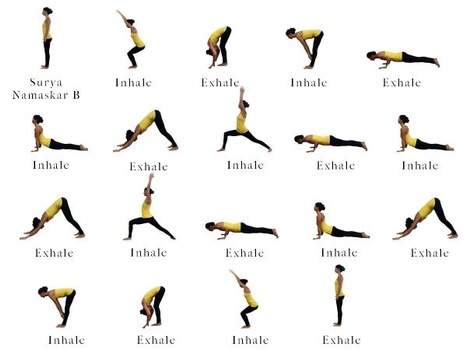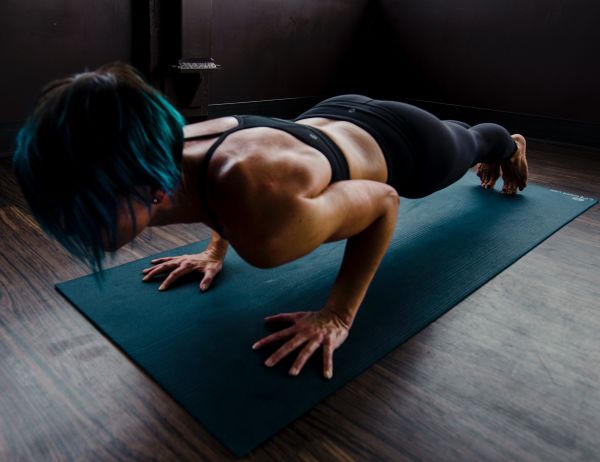Learn how to practice Sun Salutation A, one of many versions, and align your breath with your body’s movements. This process will be detailed, so make sure you pay close attention while following these in real-time:
Part 1 - Preparation for Surya Namaskar
Sun Salutation A (Surya Namaskar) is used as a warm-up flow for most yoga poses, because it helps induce blood circulation in the entire body. There are no specific yoga poses to prepare for sun salutation.
1. Full-Body Stretching - Make sure to perform simple stretches such as neck rotations, side to side back flexing, arm-shoulder stretches, and leg stretches before Surya Namaskar.

You can also warm up the body by doing a few rounds of deep breathing to open your nostrils (which is required for better energy flow during Sun Salutation).
2. Brisk Walking - If you are performing sun salutations in an outdoor setting, consider brisk-walking for around 10 to 30 minutes prior to starting this yoga flow practice.
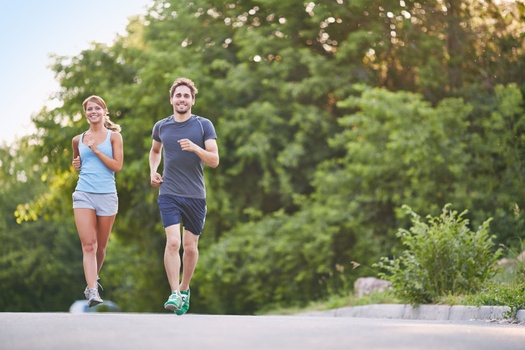
Walking at a steady pace will activate your leg muscles and help initiate cardiac function for enhanced blood circulation throughout your body.
Part 2: Step-by-Step Instructions to Perform Surya Namaskar-A
There are various Sun Salutations varieties, but here’s a guide to Surya Namaskar-A (ashtanga yoga variation), which includes step-by-step instructions for synchronizing your breath with your movements.
Step 1- Start by standing straight in Tadasana, with your hands in the Anjali Mudra (prayer position). Close your eyes, take a few moments to center yourself, and focus on your breath.
Step 2- Inhale deeply and sweep your arms up above your head into Urdhva Hastasana (Upward Salute). Here, lengthen the spine and stretch your upper body towards the sky.
Step 3- Exhale and fold forward into Uttanasana (Standing Forward Bend) by drawing your belly button inwards, thigh muscles upwards, and softening your knees slightly.
Step 4- To protect the lower back, inhale and lengthen the spine into the Ardha Uttanasana (Extended Front Fold), still drawing the belly inwards. Rest your hands on your shins or the floor in front of you with your fingers.
Step 5- Exhale, bend your knees, step backward with your right leg, and get into an Ashva Sanchalanasana (Equestrian Pose). Keep your spine long by pressing the top of your right leg up, and slightly drawing your left hip backward.
Step 6- Inhale, plant your palms on the mat, and step your left leg back to join your right leg in a Phalakasana (High Plank). Firm up the front of your body, keep the core engaged and your neck in line with your spine by strongly pressing your hands into the mat.
Step 7- Exhale and enter into a Chaturanga Dandasana by dropping halfway to the floor – also known as Low Plank or Four-Limbed Staff pose. Remember that high plank to low plank is one combined step, so no pause is needed during this transition.
Step 8- Inhale and roll into Urdhva Mukha Svanasana (Upward Facing Dog) by rolling forward and upwards. For this pose, roll your shoulders down the back, press your hands into the floor, and open your heart up and out.
Step 9- Exhale, drag your belly button in and up and return to Adho Mukha Svanasana (Downward Dog). Press your legs with your toes in the mat and lengthen the entire spine by grounding your hands into the floor.
Step 10- Return to the Equestrian Pose by inhaling and stepping your right foot forward to your right thumb.
Step 11- Exhale and enter into the Standing Forward Fold by bringing the left foot forward to meet the right.
Step 12- Return to Urdhva Hastasana by inhaling, grounding through the feet, softening the knees a little, firming the abdomen, and sweeping the arms out and up.
Step 13- Finally, exhale and return to Tadasana by lightly pressing the palms together and drawing them down the midline.
Step 14- This was one round of sun salutations. Before repeating the cycle on the other side, take a few seconds to center yourself and reconnect with your breath.
Performance Duration for Beginners: Perform 12 rounds of Surya Namaskar.
Performance Duration for Advanced: Perform 108 rounds of Surya Namaskar.
Part 3: Things to Keep in Mind
Are you aware of how to perform Sun Salutations? Here are some simple suggestions for making your Surya Namaskar (Sun Salutation) experience more enjoyable, effective and mindful:
Pay attention to direction: Flowing direction matters because we greet the sun and try to absorb more vital energy from it during the practice.
So, east or west, which way should you face? If you’re doing Sun Salutation in an outdoor location in the morning, face east, and if you’re doing it in the evening, face west.
Best done with mantra chanting: Mantras are high-energy quotes from Hindu scriptures. There are 12 Mantras for every step of Sun Salutation. Chanting these will help you concentrate your mind on the practice by aligning the body with the mind. Beeja Mantra, or Seed Mantra, is the source of enlightenment for the full body Chakra Balance and healing of Chakras.
Pay Attention to your breathing: If your breathing pattern is not specific for each pose, you may not be able to smoothly transition through flowing poses, and you may not get the full stretch.
Part 4: Relaxing Poses for Surya Namaskar-A
It is important to rest and calm the intensive energy in the muscles after performing Sun Salutation (Surya Namaskar). As a result, the practice should come to a stop while performing the following relaxation poses:
1. Savasana (Corpse Pose) - Savasana is the position of lying flat on one's back on the ground like a corpse. This relieves the exhaustion brought on by a long practice of Sun Salutations Flow, and it promotes mental clarity.
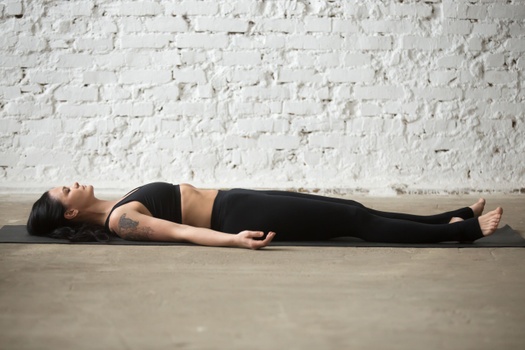
You can learn to relax by remaining still for a period of time and keeping your mind steady while fully conscious. Both the body and the mind are energized and refreshed by this mindful relaxation.
2. Advasana (Reverse Corpse Pose) - Advasana is a basic yoga pose that is also calming for the entire body. This yoga posture is performed for deeper relaxation post-sun salutations and mental tranquility to offer the body deep rest.
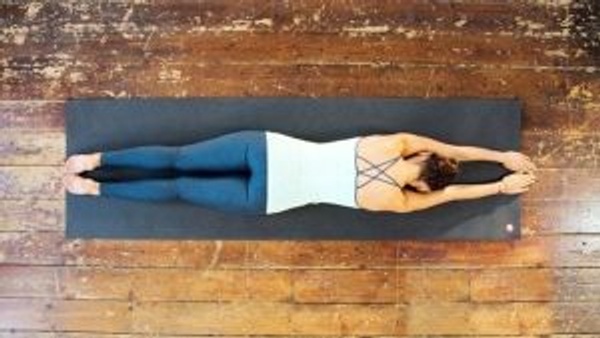
Image Credits: finessyoga.com
It not only relieves weariness but also protects against a variety of ailments. Also, it’s the best asana for balancing the whole body and curing the Vata dosha.
